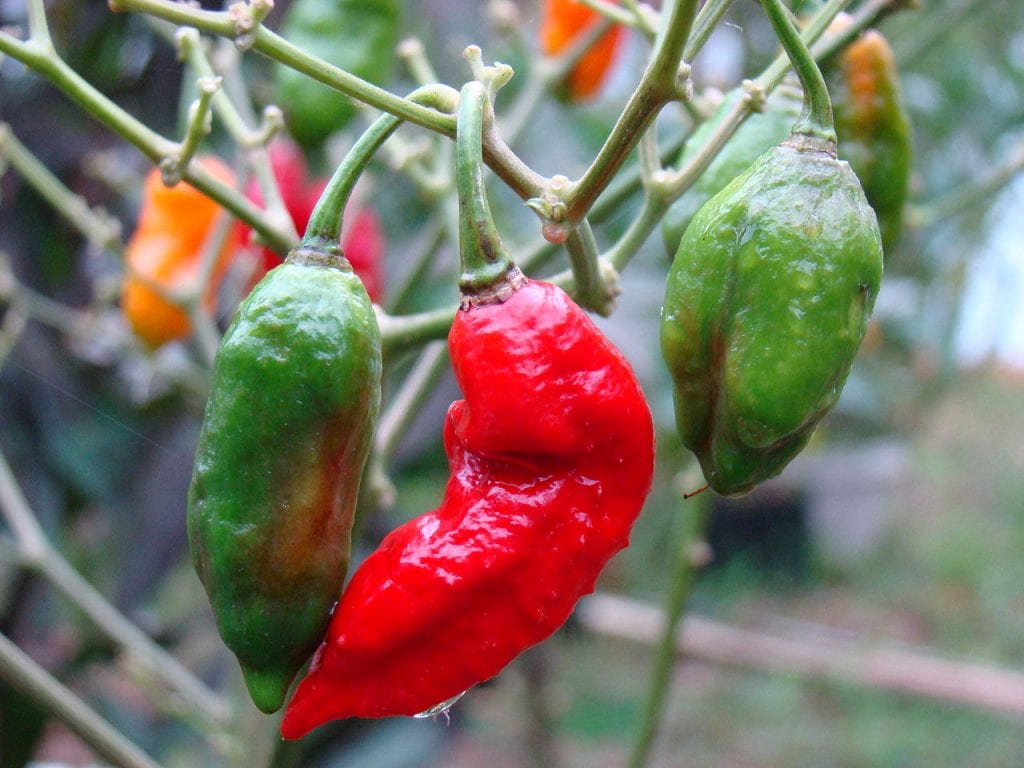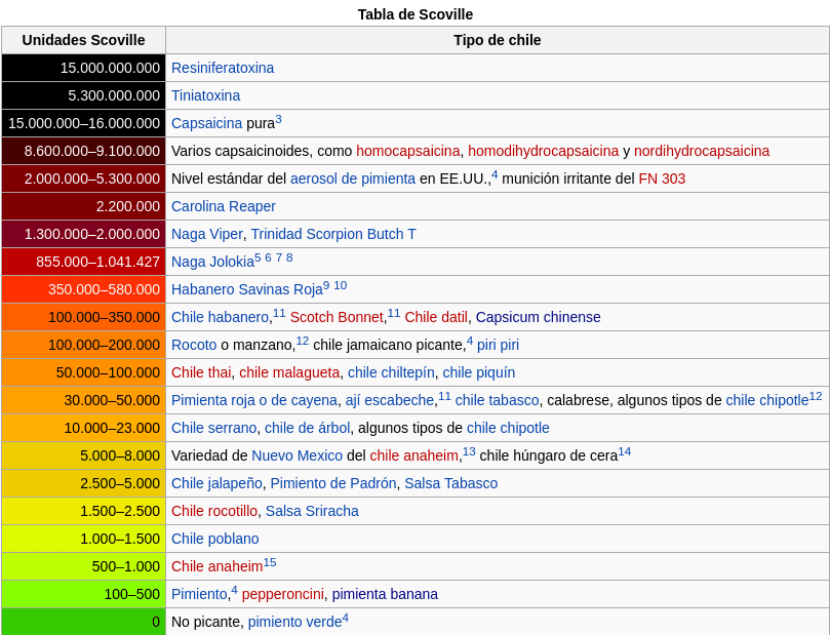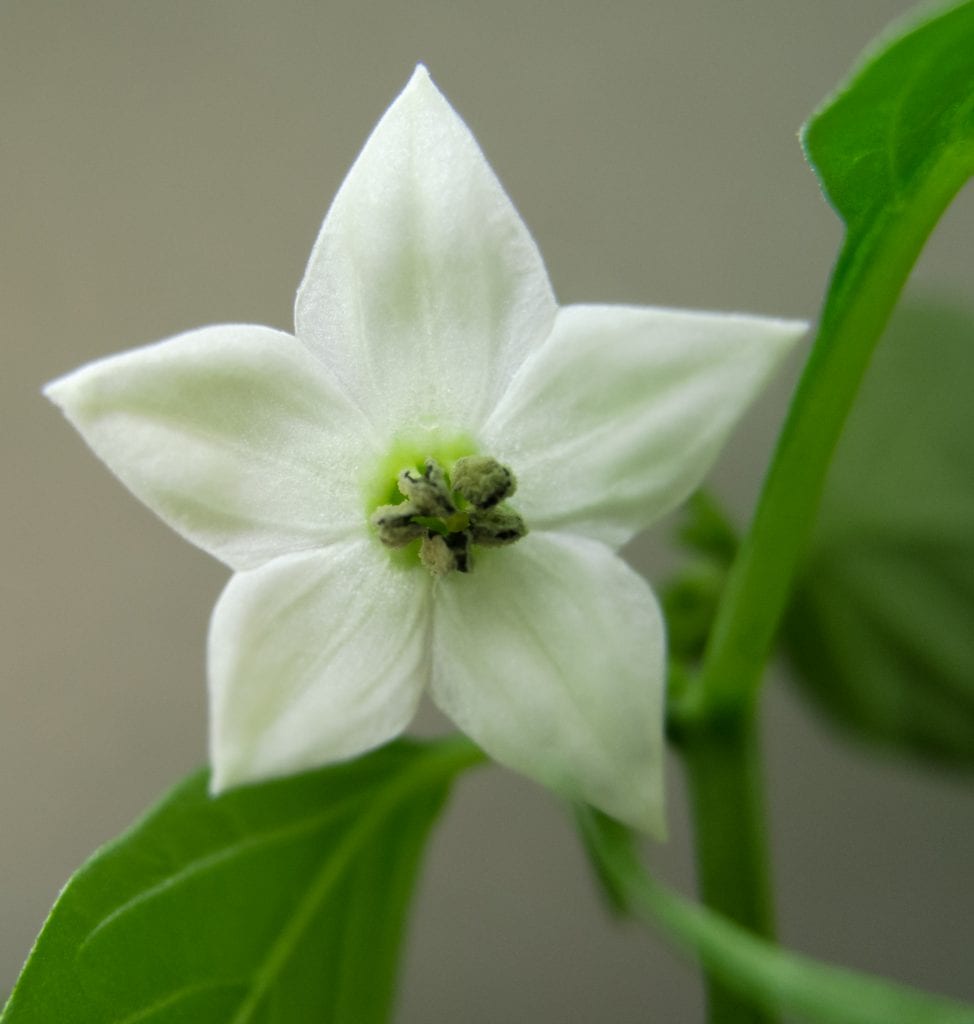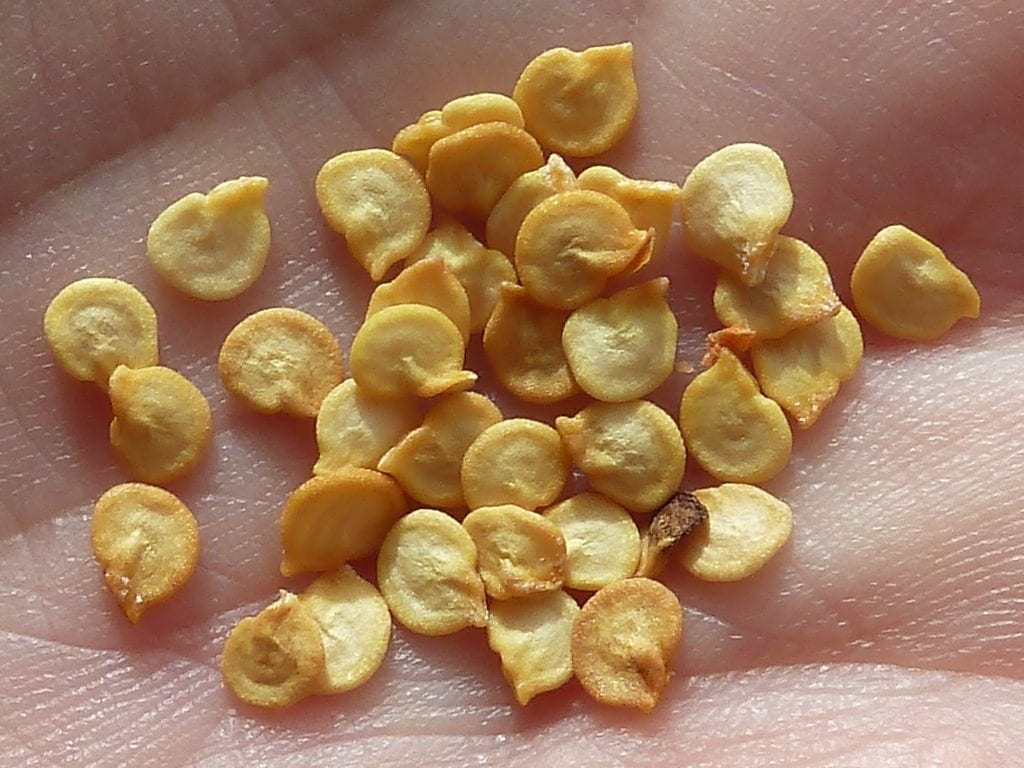
If you are one of those who love spicy, the plant that I am going to tell you about this time is going to put all your senses to the test. Is the ghost chilli, known as Bhut Jolokia or Naga Jolokia. It is one of the hottest peppers in the world according to the Scoville Scale.
But What causes the itch? And how is it grown?
Ghost chili pepper: why is it so spicy?

Image - Screenshot, Wikipedia
The itch is produced by a substance called Capsaicin, found in any hot pepper. These plants need it to defend themselves against herbivores and anyone who wants to eat it, except for us who try everything but we should not since the ghost chilli pepper would cause inflammation of the skin and mucous membranes, and we would have difficulty breathing, as well as heat, a lot of heat.
When food bites us instinctively we drink water, and if that doesn't work we drink a glass of orangeade or cola, but when the cause of the itch is a hot pepper like Naga Jolokia, we shouldn't drink water, since Capsaicin is hydrophobic, which means that it does not mix with the vital liquid. What we can do is take a couple of tablespoons of oil, milk, or yogurt.
Here's a video from a blogger who wanted to try it:
And if after reading this you would like to know where it comes from and how to grow it, keep reading:
Characteristics of the ghost chilli

The ghost chilli is one of the five cultivars of the species capsicum chinense. It is a branched herbaceous plant, which grows up to 2,5 meters in height. Its leaves are petiolate, with petioles up to 2cm long, ovate, up to 10cm long by 4cm wide. The flowers appear in groups of two or more specimens, and have 5 white petals. The fruit is an oblong to globose berry, yellow to red (in the case of our protagonist, it is red).
Its growth rate is fast, so it produces an interesting amount of fruit from the first year. The only downside is that is sensitive to cold, so that in climates where temperatures drop below 5ºC it is usually grown as an annual horticultural plant.
How is it grown?

If you would like to have a ghost chilli plant, follow our advice:
Siembra
Capsicum seeds must be purchased and sow in spring, after the risk of frost has passed and temperatures, both maximum and minimum, begin to rise. To do this, follow this step by step:
- The first thing I recommend you do is put them in a glass with a little water; just a little, without completely covering them. Keep them like this for 24 hours.
- The next day, prepare the seedbed. As such you can use seedling trays, peat tablets (Jiffy), milk or yogurt containers,… in short, whatever comes to mind. Of course, it must have holes for water drainage.
- Then fill the seedbed with substrate of universal culture, one specific for seedbeds or, if you prefer, with vermiculite.
- Then, place a maximum of two seeds in each alveolus, peat pellet or pot.
- Now cover with a very thin layer of substrate, more than anything to avoid being blown away by the wind.
- Water, soaking the entire substrate well.
- Y finally place the seedbed in an area where the sun shines directly during, if possible, the whole day.
They will germinate in a couple of weeks.
Replication and transplantation
Once the seedlings have reached a manageable size, that is, they are about 5cm or more high, it will be time to move them to a larger pot. To do this, you have to do the following:
- To begin with, you must extract the seedlings from the socket or pot carefully.
- Then go removing the substrate from around the roots, trying not to break any. To make it easier for you, I recommend putting the root ball in a bowl or basin with water, since this way the substrate is better removed.
If it is still impossible or you don't want to risk it, keep the seedling that grows stronger and cut the other one. - Then, plant each seedling in an individual pot about 20cm in diameter, using universal growing medium.
- Then waters.
- Place the seedling in semi-shade until you see it growing, which will be when you can put it in the sun again.
Once it reaches a height of 15-20cm, you can move it to a larger pot by following steps 1, 3 (use one 25cm in diameter or more), 4 and 5, or to the garden.
How to plant chilli peppers in the garden?
If you want to have chilli peppers in your garden, you must plant your seedlings in rows, leaving a distance between them of 30-35cm. Thus, they will be able to grow without problems. Likewise, and for its development to be optimal, they have to have tutors, since it is common that due to the weight of the fruits, or of the plant itself, it cannot grow straight.
Care
When you have ghost chillies planted in individual pots or in the garden, they will need a series of care, which are:
- Location: full sun.
- Irrigation: frequent, 3 to 4 times a week.
- Subscriber: fertilize with organic fertilizers; liquid if they are in a pot or powder if they are in the ground. In the first case, you must read the indications specified on the package, while in the second you can apply a layer of 2-3cm around every 15-20 days.
- Pruning: If you want to increase production, you have to leave it 3 main branches, but if you want it to bear fruit before it is better to leave it 2. In addition, you also have to cut the leaves that touch the ground, the stems that grow towards the interior of the plant , and the shoots of the main trunk.
And that's all. If you want to have ghost chillies at home, be very careful with their fruits, because although there are no studies that indicate that it is dangerous for your health, it is better not to risk it, especially if you have a sensitive palate.